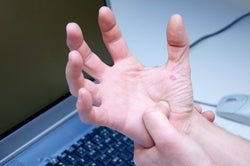Carpal Tunnel Release Surgery
Hand & Wrist Arthroscopy
Since the hand and wrist are comprised of so many bones, ligaments and joints, arthroscopy is ideal for diagnosing and repairing injuries and conditions in these areas. In an arthroscopic examination, an orthopaedic surgeon makes a small incision in the hand or wrist and inserts a tiny fiber optic camera into the site.
This camera clearly displays three-dimensional images of the joint on a monitor so the surgeon can move instruments to damaged areas to make repairs. This minimally invasive procedure is helpful in treating a number of conditions including carpel tunnel syndrome, trigger finger, fractures, ligament tears and ganglion cysts.
Carpal tunnel syndrome is a common problem affecting millions of adults. The condition causes pain and numbness in the hand and wrist. Some people report feeling an electric shock type sensation in the fingers and pain that travels up the arm. Symptoms usually develop over time and worsen with use to where the discomfort is constant. While carpel tunnel syndrome patients are normally older, the condition is hereditary in some cases and certain medical conditions – diabetes, rheumatoid arthritis and thyroid disease – can also be a factor. People who work in jobs that require repetitive motion are also at higher risk.
Some people get relief from pain by wearing braces or a splint, taking medications, having steroid injections and changing their activities. However, this is not successful in all cases. Arthroscopic surgery offers a corrective procedure that decreases the pressure on the carpel ligament and nerve.
Using the guidance of an arthroscope, the orthopaedic surgeon makes a small incision in the palm of the affected hand. An instrument is inserted and cuts the transverse carpel ligament, which frees up more room for the nerve and tendons. The area is stitched and over time, new growth heals the ligament while preserving the space.
